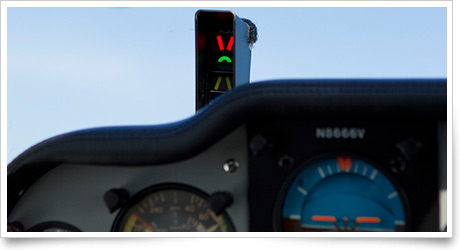training tipsConstant bank, changing pressures
In a mock oral exam, the CFI asks, "What is a key difference between the straight-ahead power-on stalls we performed today and the power-on stalls we performed in turning flight?"
The checkride applicant replies, "Maintaining the bank angle of 20 degrees was a challenge during the turning stall entries. The necessary control pressures kept changing. Not just bank, but the pitch and rudder inputs, too!"
What was going on?
Find the explanation in Chapter 4 of the Airplane Flying Handbook; it's cited as a reference for the maneuver in the Private Pilot Practical Test Standards.
During the approach to a power-on turning stall, the pilot must control both an overbanking tendency and a tendency toward lower pitch while maintaining "the pitch attitude that will induce a stall," as required for the PTS task.
With the aircraft established in a nose-high turning attitude, "the angle of bank has a tendency to increase," explains the chapter. "This occurs because with the airspeed decreasing, the airplane begins flying in a smaller and smaller arc. Since the outer wing is moving in a larger radius and traveling faster than the inner wing, it has more lift and causes an overbanking tendency."
As for pitch: "At the same time, because of the decreasing airspeed and lift on both wings, the pitch attitude tends to lower."
The busy pilot must control another effect as well: "In addition, since the airspeed is decreasing while the power setting remains constant, the effect of torque becomes more prominent, causing the airplane to yaw."
All that explains why constantly changing control pressures are needed to perform a maneuver that uses a single, specified bank angle "not to exceed 20 degrees, ±10 degrees."
And here's a follow-up tip for a smooth turning stall entry and recovery: When the stall occurs, remember during your recovery to ease off on those aggressive control pressures; they won't be needed for control when induced drag decreases with the lower angle of attack, and flight control responsiveness returns! training productsPrivate pilot handbook on saleDyer's Ground School Workbook for Private Pilots is on sale for $31.50 at PilotMall.com. The workbook provides students with a set of exercises and study questions matched chapter by chapter to the FAA's Pilot's Handbook of Aeronautical Knowledge. Student pilots would use the workbook in conjunction with their ground or flight training to better understanding the ground school material. Study guide on severe weather flyingThe book Severe Weather Flying, by Dennis Newton, describes how to anticipate hazardous weather conditions, avoid them in flight, and get out of them when encountered. The book costs $17.50.
Note: Products listed have not been evaluated by ePilot editors unless otherwise noted. AOPA assumes no responsibility for products or services listed or for claims or actions by manufacturers or vendors. final examQuestion: I'm a newly rated private pilot and a group I'm a part of wants me to donate a charity flight for a silent auction. Can I do it?
Answer: FAR 91.146 specifies what's required of a private pilot if he or she is going to accomplish a charity flight. The biggest obstacle new private pilots often face is the hour requirement of the regulation. Private pilots are required to have at least 500 hours of flight time before they can conduct operations listed in 91.146. Also, it's easy to forget a local flight standards district office needs written notification at least seven days before the event is to occur. Take a look at the regulation to see what is required in that notification. Here's AOPA's guide on conducting charity flights as well if you'd like to have a refresher.
Got a question for our technical services staff? Email [email protected] or call the Pilot Information Center, 800/872-2672. Don't forget the online archive of "Final Exam" questions and answers, searchable by keyword or topic. |
 A student pilot and a flight instructor are reviewing after a session of flight-test prep for the student's private pilot checkride. The focus is on the slow flight and stall maneuvers to be demonstrated on the flight test, and the honing of the student's understanding of the all-important
A student pilot and a flight instructor are reviewing after a session of flight-test prep for the student's private pilot checkride. The focus is on the slow flight and stall maneuvers to be demonstrated on the flight test, and the honing of the student's understanding of the all-important 

